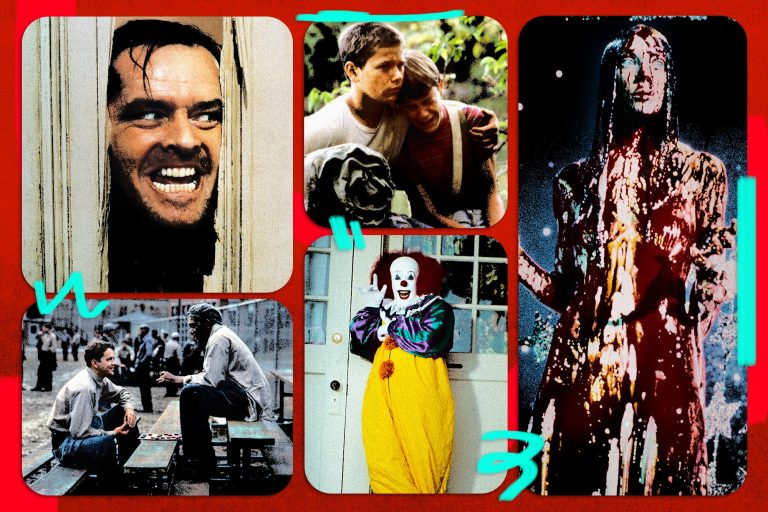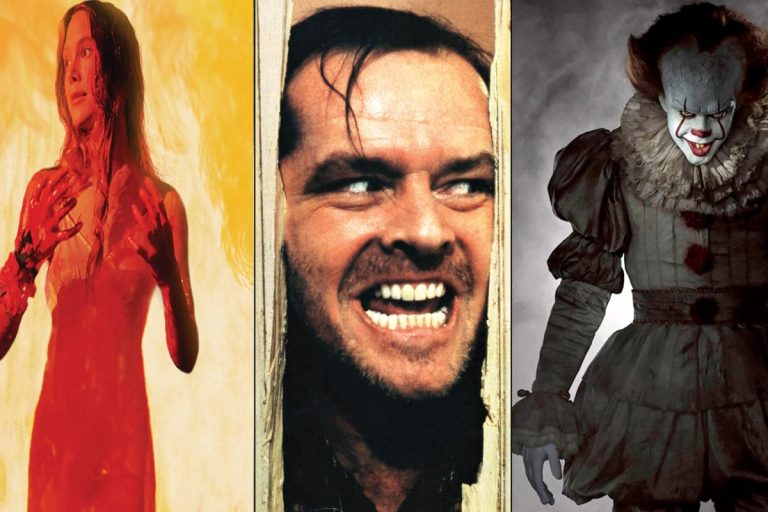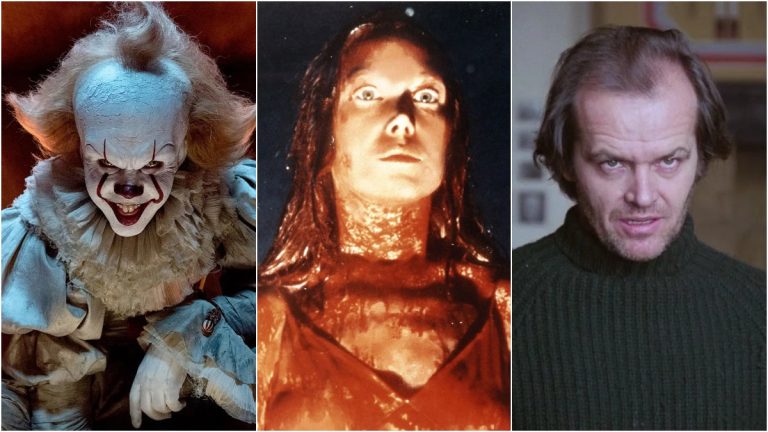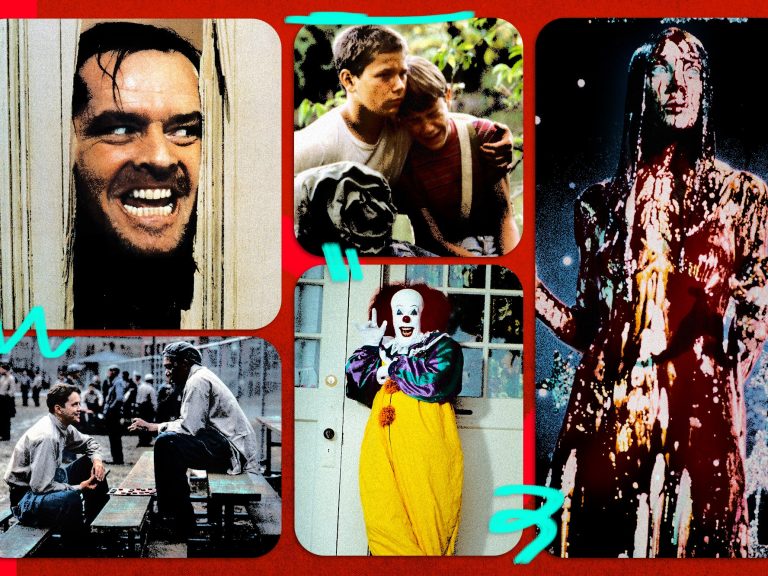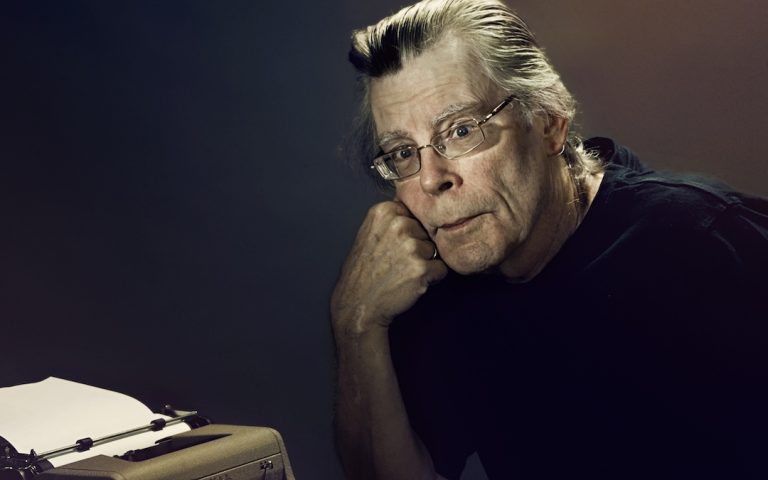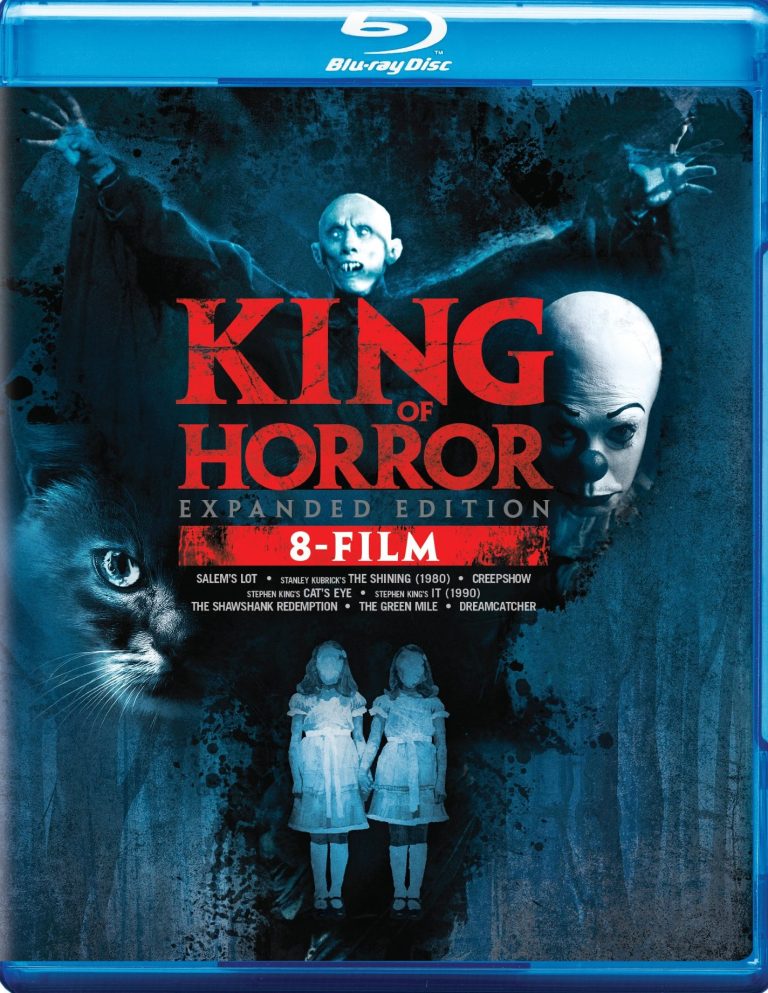Stephen King Movies: A Guide To Spine-Chilling Cinematic Techniques
If you’re a fan of spine-chilling movies that keep you on the edge of your seat, then you’re in for a treat! Today, we’re diving into the world of Stephen King movies, where horror and cinematic brilliance collide. From the mind of the master of horror himself, Stephen King, these films have captivated audiences around the globe with their bone-chilling stories and innovative filmmaking techniques. So, grab some popcorn and get ready to explore the dark and twisted world of Stephen King movies.
When it comes to Stephen King movies, it’s not just the terrifying plots that make them so memorable. It’s the way these films bring his stories to life through spine-chilling cinematic techniques. From eerie sound effects that send shivers down your spine to expertly crafted suspense that keeps you guessing until the very end, Stephen King movies are a masterclass in horror filmmaking. In this guide, we’ll take a closer look at the techniques used in these movies, from atmospheric lighting and haunting cinematography to heart-pounding musical scores. Whether you’re a die-hard horror fan or just looking for a good scare, this guide will give you a deeper appreciation for the artistry behind Stephen King movies and help you discover new favorites along the way. So, buckle up and get ready for a rollercoaster ride through the dark and twisted world of Stephen King movies.
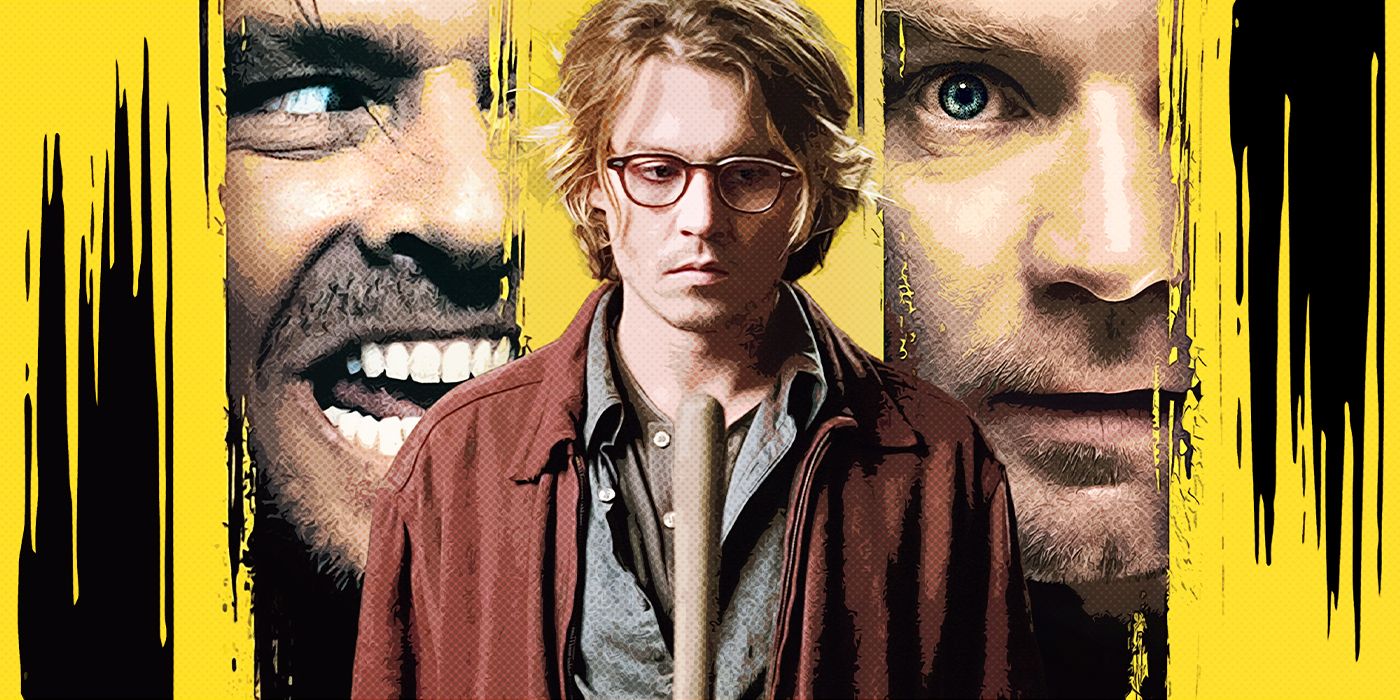
Stephen King Movies: A Guide to Spine-Chilling Cinematic Techniques
Stephen King is a master of horror, and his novels have been adapted into some truly terrifying movies. From “The Shining” to “It,” King’s stories have captivated audiences with their spine-chilling suspense and unforgettable characters. In this article, we will explore the cinematic techniques used in Stephen King movies that contribute to their ability to send shivers down our spines.
The Power of Atmosphere
One of the key elements that make Stephen King movies so terrifying is the power of atmosphere. Directors use various techniques to create an eerie ambiance that immerses viewers into the story and heightens the sense of dread. From the haunting music to the carefully designed sets, every detail is meticulously crafted to evoke a sense of unease. The use of lighting, shadows, and sound effects all contribute to the overall atmosphere, making it an essential component of a spine-chilling cinematic experience.
In Stephen King’s “The Shining,” director Stanley Kubrick masterfully creates a sense of isolation and foreboding through the vast and empty spaces of the Overlook Hotel. The long, winding corridors and the unsettling silence build tension, creating an atmosphere of dread that lingers throughout the film. This atmospheric approach is also evident in movies like “Carrie” and “Misery,” where the settings play a crucial role in intensifying the horror.
The Art of Suspense
Suspense is a vital ingredient in any horror movie, and Stephen King adaptations excel in keeping audiences on the edge of their seats. The filmmakers skillfully build tension by using various techniques to delay the reveal of the monster or the true nature of the threat. By utilizing slow-burn storytelling and precise pacing, they create a sense of anticipation that keeps viewers guessing and dreading what might happen next.
In “It,” director Andy Muschietti expertly utilizes suspense to heighten the fear factor. The gradual buildup of tension and the constant threat of Pennywise the Clown lurking in the shadows contribute to an atmosphere of constant unease. The use of jump scares and unexpected twists further enhances the suspense, making it a heart-pounding cinematic experience.
The Psychological Terror
One of the hallmarks of Stephen King’s work is the exploration of deep-rooted fears and the psychological torment experienced by his characters. The movies based on his novels often delve into the darkest corners of the human mind, tapping into our deepest fears and insecurities. By portraying the internal struggles and emotional turmoil of the characters, these films create a sense of psychological terror that lingers long after the credits roll.
In “Misery,” director Rob Reiner delves into the twisted obsession of Annie Wilkes, a psychopathic fan who holds her favorite author captive. The film delves into themes of obsession, control, and the blurred lines between reality and fiction. By focusing on the psychological aspect of the horror, “Misery” becomes an intense and deeply unsettling experience for the audience.
The Visual Effects of Fear
While atmospheric elements and psychological terror play significant roles in Stephen King movies, the visual effects also contribute to the spine-chilling experience. From grotesque creatures to gruesome deaths, the use of practical and visual effects brings King’s terrifying visions to life on the big screen. These effects add an extra layer of horror, immersing viewers in a world where the unimaginable becomes real.
In “The Mist,” director Frank Darabont uses visual effects to create horrifying creatures that lurk within the mist, heightening the sense of danger and fear. The combination of practical effects and CGI brings these monsters to life, making them more than just figments of the characters’ imagination. The visual effects become an integral part of the storytelling, intensifying the horror and leaving a lasting impression on the audience.
In conclusion, Stephen King movies are known for their spine-chilling cinematic techniques, and it’s the combination of atmosphere, suspense, psychological terror, and visual effects that make them truly terrifying. From the power of atmospheric elements to the art of suspense, these films keep audiences engaged and on the edge of their seats. By delving into the darkest corners of the human psyche and utilizing visual effects to bring terrifying visions to life, Stephen King movies continue to haunt our nightmares. So, dim the lights, grab some popcorn, and prepare to be scared as you embark on a journey into the world of Stephen King’s spine-chilling cinematic universe.
Key Takeaways: Stephen King Movies
- Stephen King movies use various cinematic techniques to create spine-chilling experiences.
- The use of suspense and tension builds anticipation and keeps audiences on the edge of their seats.
- Visual effects and makeup play a crucial role in bringing King’s terrifying characters to life.
- Sound design, including eerie music and atmospheric sounds, enhances the overall frightening atmosphere.
- King’s storytelling style, with its attention to detail and character development, keeps viewers invested in the gripping narratives.
Frequently Asked Questions
1. What are some signature cinematic techniques used in Stephen King movies?
In Stephen King movies, there are several signature cinematic techniques used to create spine-chilling moments. One technique often employed is the use of suspenseful and eerie atmospheres. Through lighting, sound design, and set design, filmmakers create an unsettling environment that keeps audiences on the edge of their seats.
Another common technique is the use of jump scares. These are sudden, unexpected moments that startle the viewer. They can be achieved through quick cuts, sudden loud noises, or the appearance of a frightening character or object. Jump scares are effective in building tension and creating memorable scare moments.
2. How does Stephen King’s storytelling style translate to the big screen?
Stephen King is known for his immersive storytelling style, and filmmakers often strive to capture the essence of his narratives on the big screen. One way this is achieved is through the use of strong character development. King’s stories often revolve around complex and relatable characters, and filmmakers aim to bring these characters to life, allowing audiences to connect with them emotionally.
Additionally, Stephen King’s knack for building suspense and tension is translated through the pacing and editing of his movies. Filmmakers carefully craft scenes to maintain a sense of unease and anticipation, keeping viewers engaged throughout the film. This, coupled with King’s ability to create unexpected plot twists, ensures a thrilling cinematic experience.
3. How do Stephen King movies utilize visual effects to enhance the horror elements?
Visual effects play a crucial role in enhancing the horror elements in Stephen King movies. One common use of visual effects is to bring supernatural creatures or entities to life. Through the use of CGI, makeup, and prosthetics, the filmmakers can create terrifying and realistic creatures that add an extra layer of horror to the story.
Another way visual effects are utilized is in creating atmospheric and otherworldly settings. From haunted houses to eerie landscapes, visual effects can transform ordinary locations into nightmarish realms. These effects help to immerse the audience in the world of the story and intensify the horror experience.
4. How do Stephen King movies utilize sound design to create a chilling atmosphere?
Sound design is a crucial aspect of Stephen King movies in creating a chilling atmosphere. Filmmakers often use unsettling and eerie sound effects to heighten tension and build suspense. From creaking floors to eerie whispers, the sound design adds an extra layer of unease to the viewing experience.
In addition to sound effects, the musical score is carefully composed to evoke feelings of fear and unease. Haunting melodies and dissonant chords can make the audience feel on edge, intensifying the impact of the horror elements in the film. The combination of sound effects and music creates a truly immersive and spine-chilling auditory experience.
5. How do Stephen King movies balance horror with storytelling and character development?
Stephen King movies are known for striking a balance between horror, storytelling, and character development. While the horror elements are essential in creating scares and thrills, filmmakers also recognize the importance of strong narratives and well-developed characters.
By grounding the horror in relatable characters, the audience becomes emotionally invested in their fates. This emotional connection enhances the impact of the horror and makes the scares more meaningful. Filmmakers often take time to develop the backstory and motivations of the characters, ensuring that the horror is not just superficial, but deeply rooted in the narrative.
How Stephen King Scares You In 3 Steps | The Art Of Film
Final Summary: Stephen King Movies – A Spine-Chilling Cinematic Journey
As we reach the end of our spine-chilling cinematic journey through the world of Stephen King movies, one thing is clear: the master of horror knows how to leave us trembling in our seats. From haunted hotels to demonic clowns, King’s stories have captivated audiences for decades, and his movies have brought his terrifying visions to life in unforgettable ways.
Through this guide, we’ve explored the unique and spine-chilling cinematic techniques employed by filmmakers who have adapted King’s works. From the expert use of suspense and tension to the artful manipulation of sound and visuals, these movies have truly brought the horror genre to new heights. Whether it’s the heart-pounding scares of “The Shining” or the psychological twists of “Misery,” each film has left an indelible mark on the genre.
But it’s not just the scares that make Stephen King movies so memorable; it’s the rich storytelling and complex characters that draw us in. King has a knack for creating relatable protagonists who navigate the darkness with courage and determination. These characters, brought to life by talented actors, allow us to connect with the horrors unfolding on screen and experience a rollercoaster of emotions.
In conclusion, Stephen King movies are more than just horror films. They are a testament to the power of storytelling and the ability to tap into our deepest fears. So, if you’re a fan of spine-chilling thrills and masterful filmmaking, dive into the world of Stephen King movies and prepare to be terrified.

